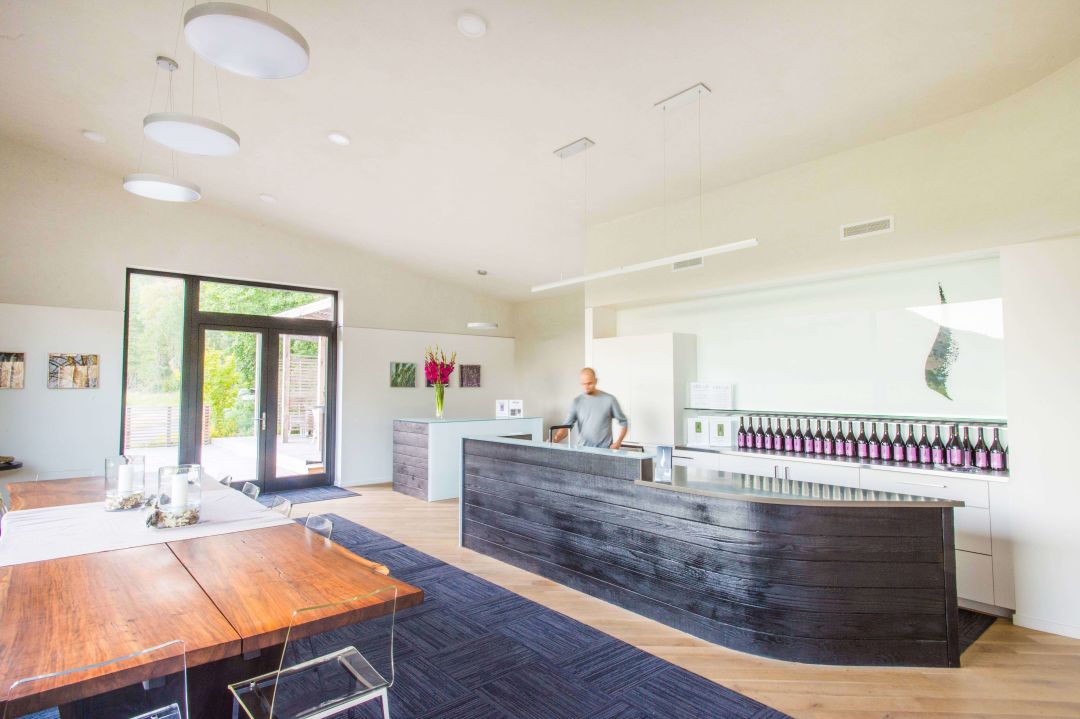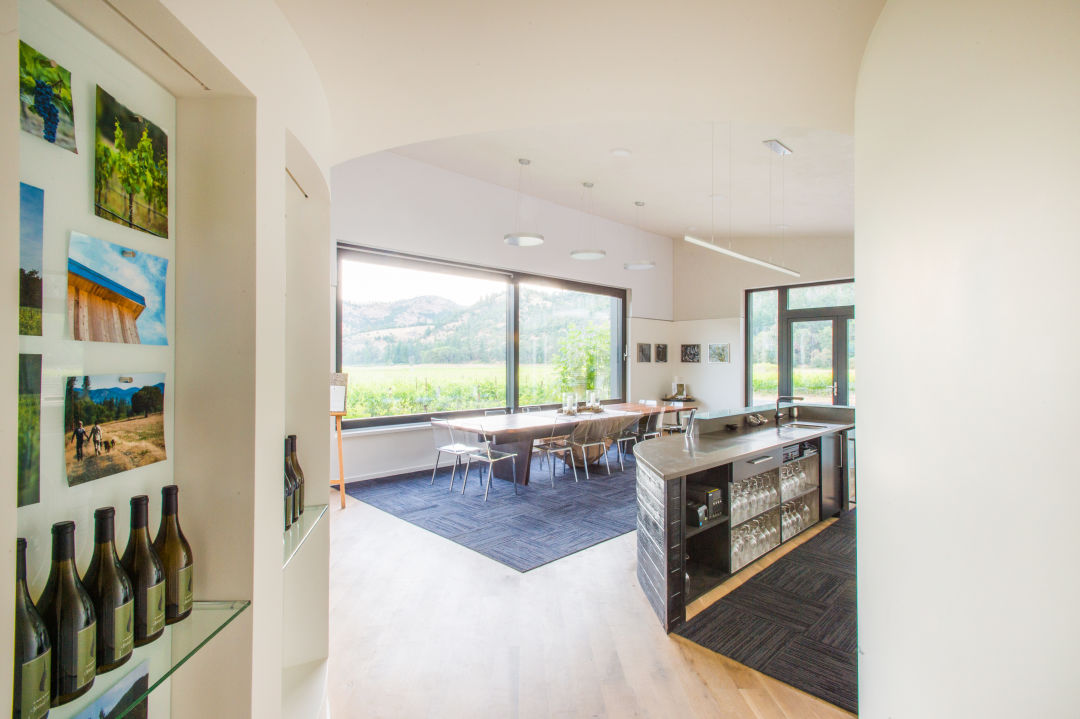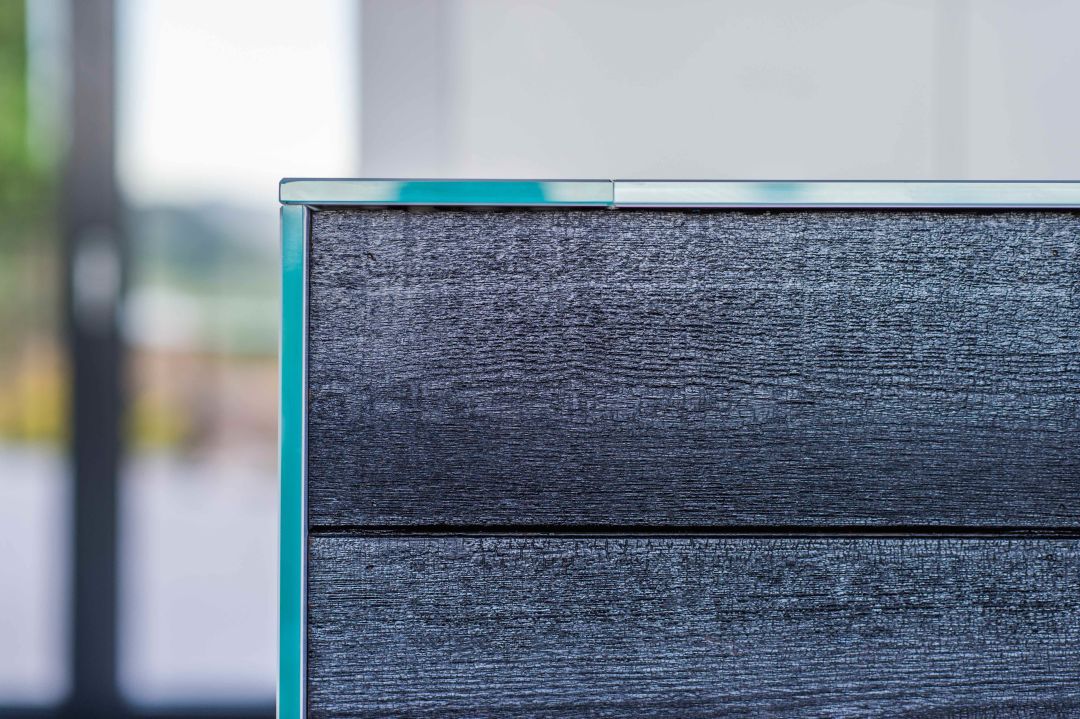One Portland Design Build Firm Is on a Crusade to Make Buildings Less Poisonous

The Tasting Room at Cowhorn Vineyard & Garden, designed and built by Green Hammer, is the first winery in the world to achieve Living Building Challenge certification.
Image: Claire Thorington
In late August, Barbara and Bill Steele watered the grapevines of their award-winning vineyard, providing them with a much-needed soaking on a 90-degree day. With the Chetco Bar wildfire burning 60 miles away, a smoky haze hovered over their fields and much of Southern Oregon’s Applegate Valley.
Yet inside the new tasting room at Cowhorn Vineyard & Garden, the Steeles’ Demeter-certified Biodynamic® vineyard, guests breathed easy as they sipped on wine and nibbled on house-brined asparagus and Biodynamic® cherry chutney.
Completed in the spring of 2016, the bright and welcoming tasting room is not only free of harmful smoke and other outdoor air pollutants; it’s free of common indoor air pollutants as well. It’s the first tasting room in the world to have received the rigorous Materials Petal in a third-party certification process called the Living Building Challenge, which verifies that the building is free of toxic and bio-accumulative substances pervasive in most building materials. Invisible to the human eye and often odorless, these chemicals are not nearly as obvious as the smoke caused by the nearby wildfire. Yet, they can be just as harmful to our health.
“A building with healthy indoor air quality has a huge impact on the well-being of the occupants – especially for people who suffer from asthma, allergies or other respiratory problems,” says Erica Dunn, Director of Design at Green Hammer and the architect of the tasting room at Cowhorn Vineyard & Garden.
“It was important to us that the tasting room, like our wine, be a reflection of our values,” says Barbara Steele. “We are proud that we can tell our customers that this building is not harmful to their health. We don’t need to tell them, though. They can feel the difference.”
Helping people make healthy decisions
The EPA estimates that people spend up to 90 percent of their time indoors, where on a normal day the air quality is worse than it is outside. In most buildings, the concentrations of some pollutants are often two to five times higher than typical outdoor concentrations due to airborne pollutants coming from the building’s materials and other indoor sources.
For Dunn, ensuring healthy indoor air quality in the buildings she designs is as important as the quality of light or the flow of space – it’s a critical component to making a successful building. Until recently, trying to rid buildings of toxic chemicals was daunting, bordering on impossible, Dunn says. That’s because, except for a small percentage of known harmful chemicals regulated by the EPA, there is no requirement that manufacturers of building products disclose the ingredients in their products. “If you’re allergic to a certain ingredient such as peanuts, food labels can save your life,” Dunn says. “That’s not the case with most manufactured products.”
When selecting building materials for the tasting room at Cowhorn Vineyard & Garden, Green Hammer could not simply look up a type of flooring in a catalogue and find out what ingredients it contained. For each and every building material, ranging from 2x4s to doorknobs to drywall, Green Hammer had to contact the manufacturer to request this information. It was often not readily available.
But the tide is slowly shifting, thanks to pressure from companies like Cowhorn Vineyard & Garden and much larger players like Google that view healthy indoor air quality as a key to success. In 2014, with 70 offices in 40 countries, Google was seeking an easier way to find information about the materials it was considering for its office buildings. So it invested in Portico, a database of building products started by the Healthy Buildings Network. One can look up a product by manufacturer, product category, and whether or not it meets Leadership in Energy and Environmental Design (LEED) and Living Building Challenge standards. While the tool is still in a pilot phase, it could dramatically shift the market by driving demand for products that are safer for human health.
“We all have a right to know what’s in our buildings,” Dunn says. “Businesses like Cowhorn are paving the way, making it easier for others to make smarter decisions about how they design and build. Green Hammer is excited to support them in this goal because it’s aligned with our values, too.”

Green Hammer's design-build process focuses on selecting building techniques and materials that result in superior indoor air quality.
Image: Claire Thorington

Green Hammer's projects prove that excellent design and sound environmental practices can go hand-in-hand.
Image: Claire Thorington
